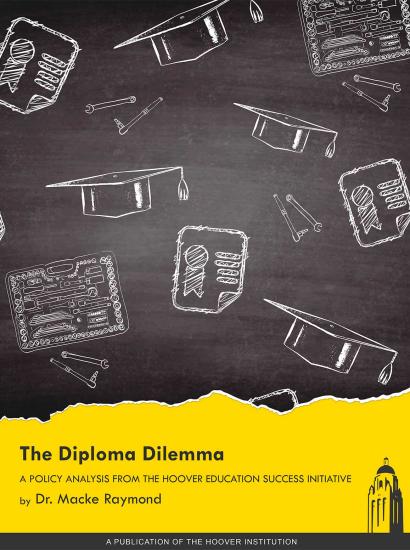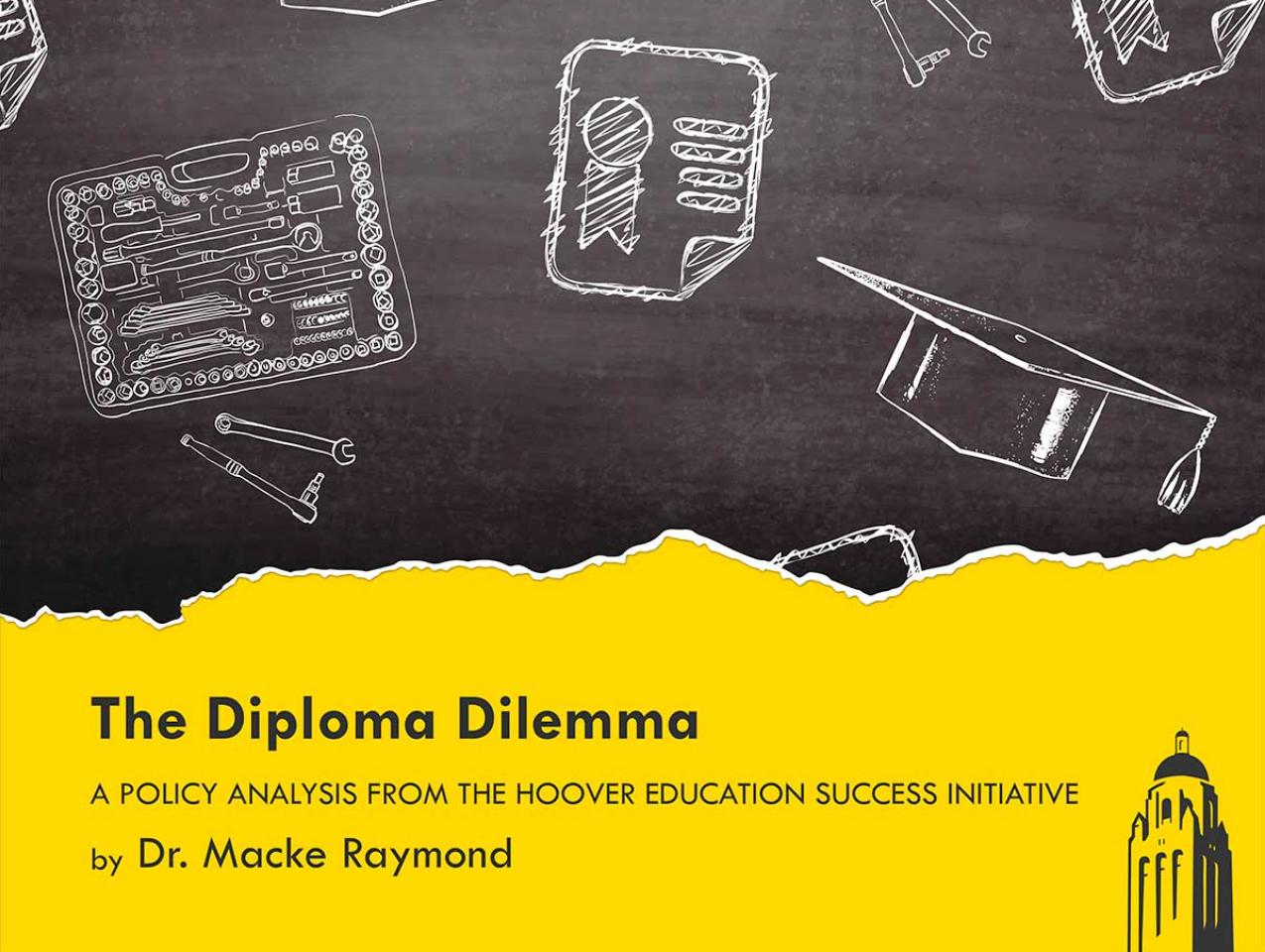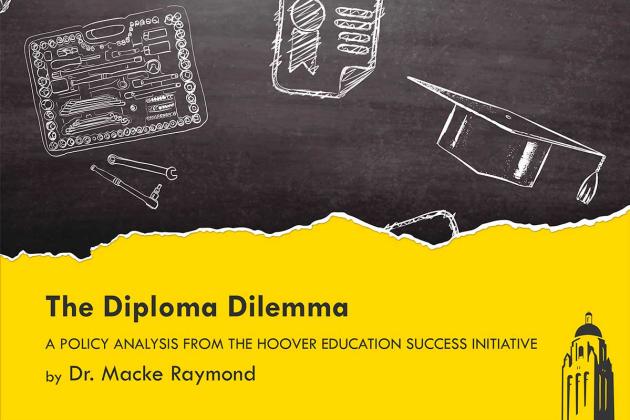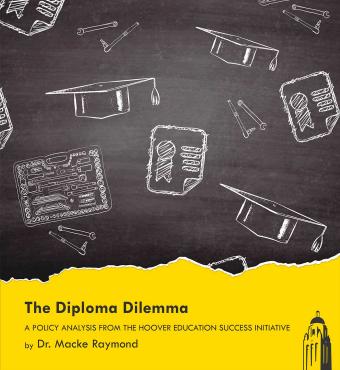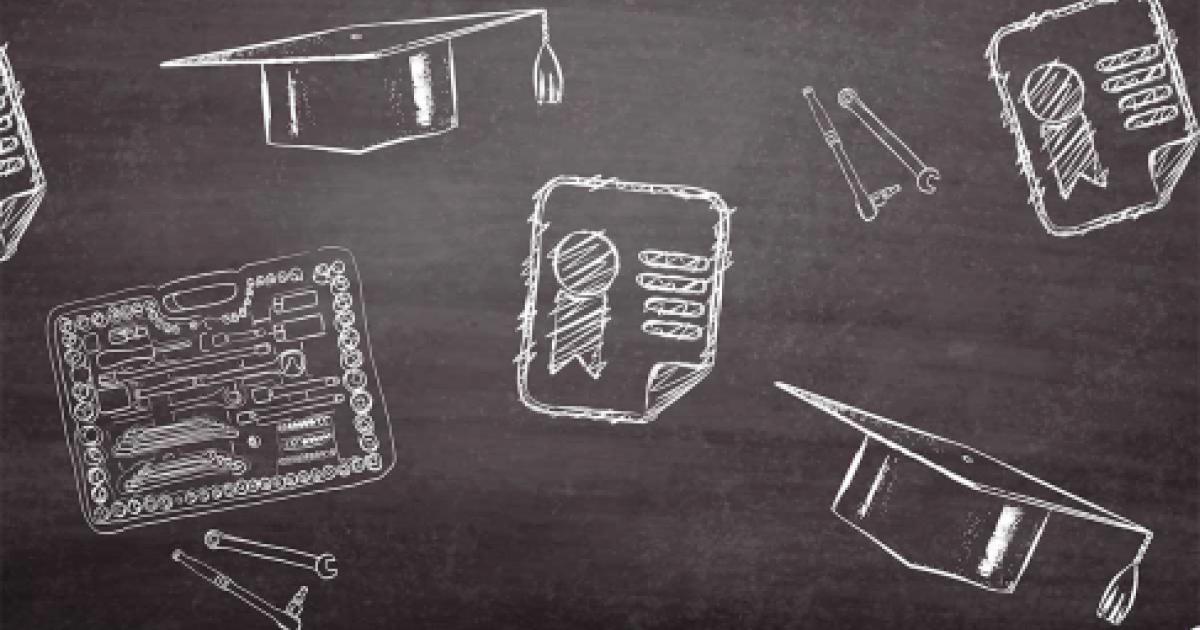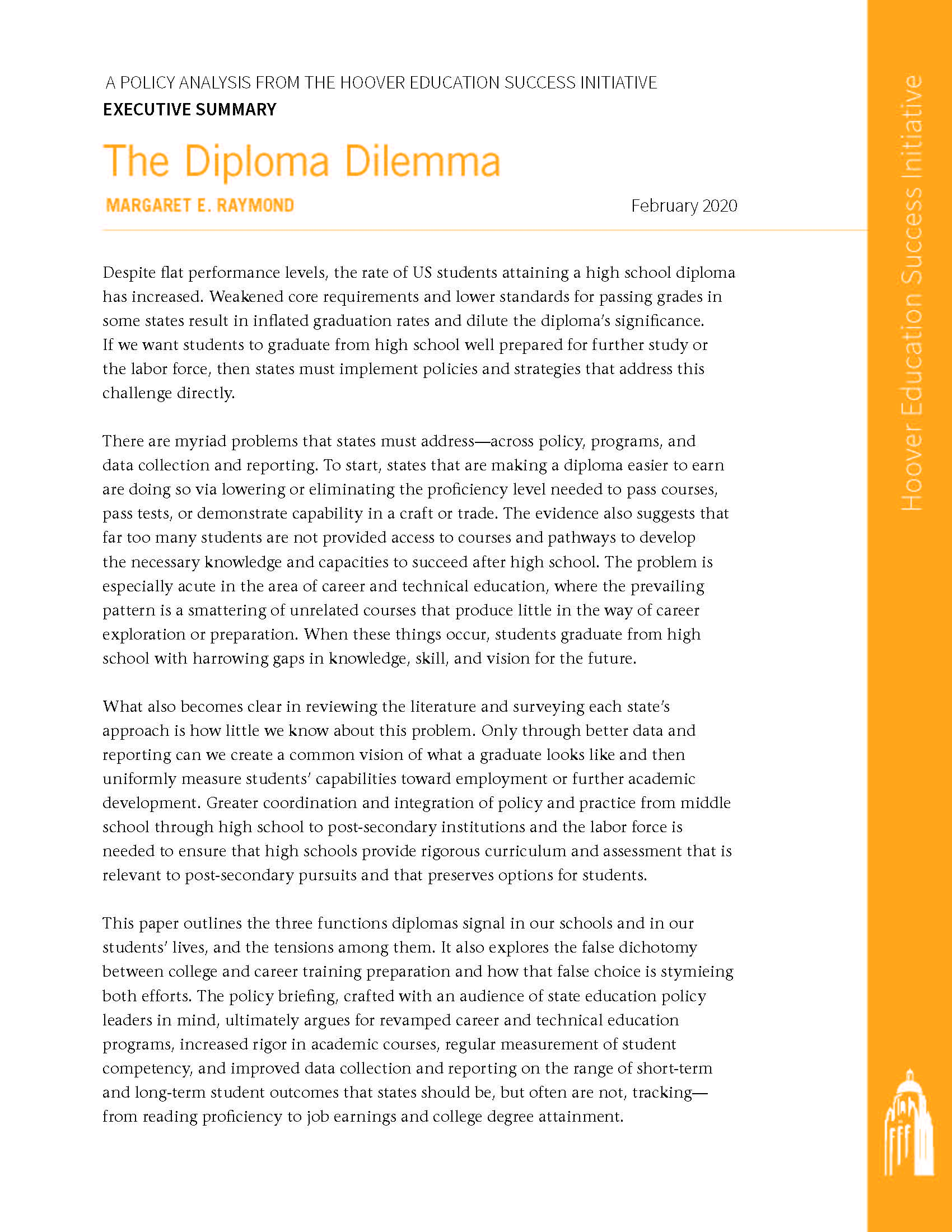Despite flat performance levels, the rate of US students attaining a high school diploma has increased. Weakened core requirements and lower standards for passing grades in some states result in inflated graduation rates and dilute the diploma’s significance. Too many students are not being given access to academic coursework and career pathways that will develop the necessary knowledge, skills, and capacities to succeed after high school. The problem is especially acute in the area of career and technical education. If we want students to graduate from high school well prepared for further study or the labor force, then states must implement policies and strategies that address this challenge directly.
Despite flat performance levels, the rate of US students attaining a high school diploma has increased. Weakened core requirements and lower standards for passing grades in some states result in inflated graduation rates and dilute the diploma’s significance. If we want students to graduate from high school well prepared for further study or the labor force, then states must implement policies and strategies that address this challenge directly.
There are myriad problems that states must address—across policy, programs, and data collection and reporting. To start, states that are making a diploma easier to earn are doing so via lowering or eliminating the proficiency level needed to pass courses, pass tests, or demonstrate capability in a craft or trade. The evidence also suggests that far too many students are not provided access to courses and pathways to develop the necessary knowledge and capacities to succeed after high school. The problem is especially acute in the area of career and technical education, where the prevailing pattern is a smattering of unrelated courses that produce little in the way of career exploration or preparation. When these things occur, students graduate from high school with harrowing gaps in knowledge, skill, and vision for the future.
What also becomes clear in reviewing the literature and surveying each state’s approach is how little we know about this problem. Only through better data and reporting can we create a common vision of what a graduate looks like and then uniformly measure students’ capabilities toward employment or further academic development. Greater coordination and integration of policy and practice from middle school through high school to post-secondary institutions and the labor force is needed to ensure that high schools provide rigorous curriculum and assessment that is relevant to post-secondary pursuits and that preserves options for students.
This paper outlines the three functions diplomas signal in our schools and in our students’ lives, and the tensions among them. It also explores the false dichotomy between college and career training preparation and how that false choice is stymieing both efforts. The policy briefing, crafted with an audience of state education policy leaders in mind, ultimately argues for revamped career and technical education programs, increased rigor in academic courses, regular measurement of student competency, and improved data collection and reporting on the range of short-term and long-term student outcomes that states should be, but often are not, tracking— from reading proficiency to job earnings and college degree attainment.
Those recommendations are summarized below. Each suggested action will demand candor, courage, and long-term commitment among state education leaders through design and implementation. States that tackle them will realize the potential of today’s students and strengthen our country’s economic and social vitality in the decades to come.
The Diploma Dilemma: Summary of State Recommendations
Improvements to Current Graduation Frameworks
• Reduce the gap between high school graduation requirements and entry requirements for state university systems.
• Establish a set of mastery-based certifications to ensure students are college and career ready.
• Ensure that students’ default pathway to graduation consists of the most rigorous college-ready courses.
• Re-evaluate the weight of classes that are “approved” for credit but that cover less substantial material than the most rigorous courses.
• Critically review the accuracy and cultural sensitivity of assessment criteria for student performance.
Improvements to Career and Technical Education (CTE)
• Consider short-term demand and wages for CTE options, drawing on available labor intelligence and insights from regional firms.
• Support CTE pathways that can deliver substantive knowledge and skills by the end of high school.
• Prioritize equal access to high-quality CTE offerings, with particular emphasis on creating opportunities for underserved students.
• Ensure that CTE pathways provide rigor and preparation equivalent to that of traditional curricula to maintain students’ future options for study or training.
Improvements to College and Career Readiness (CCR)
• Define clear and common standards and metrics for college and career readiness. • Improve communication about graduation requirements—courses, pacing, and credit accumulation—to aid families in careful course selection.
• Gather and report detailed data on student pathways, performance, and demographics to measure outcomes and equivalencies among different groups of students.
Click here to download the executive summary.
ABOUT THE AUTHOR
Margaret “Macke” Raymond is founder and director of the Center for Research on Education Outcomes (CREDO) at Stanford University. The CREDO team conducts rigorous and independent analysis and evaluation of programs that aim to improve public school outcomes for K–12 students. She serves as a regular source for local and national media and on multiple advisory boards, technical resource groups, and peer review panels.
PREVIEW: THE DIPLOMA DILEMMA
The Diploma Dilemma by Hoover Institution on Scribd









